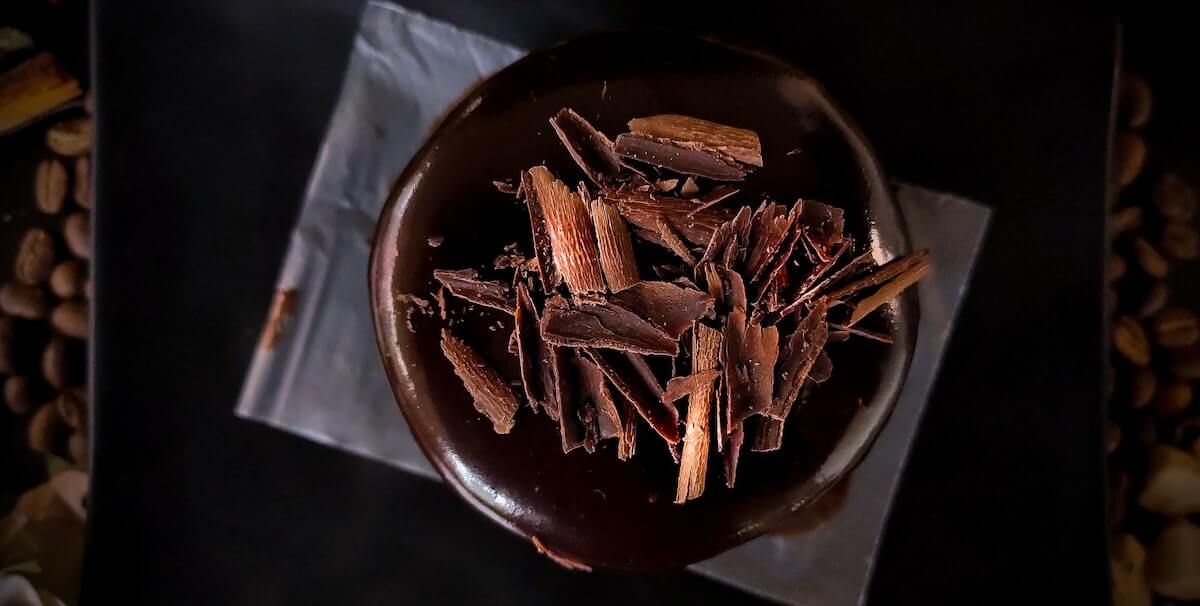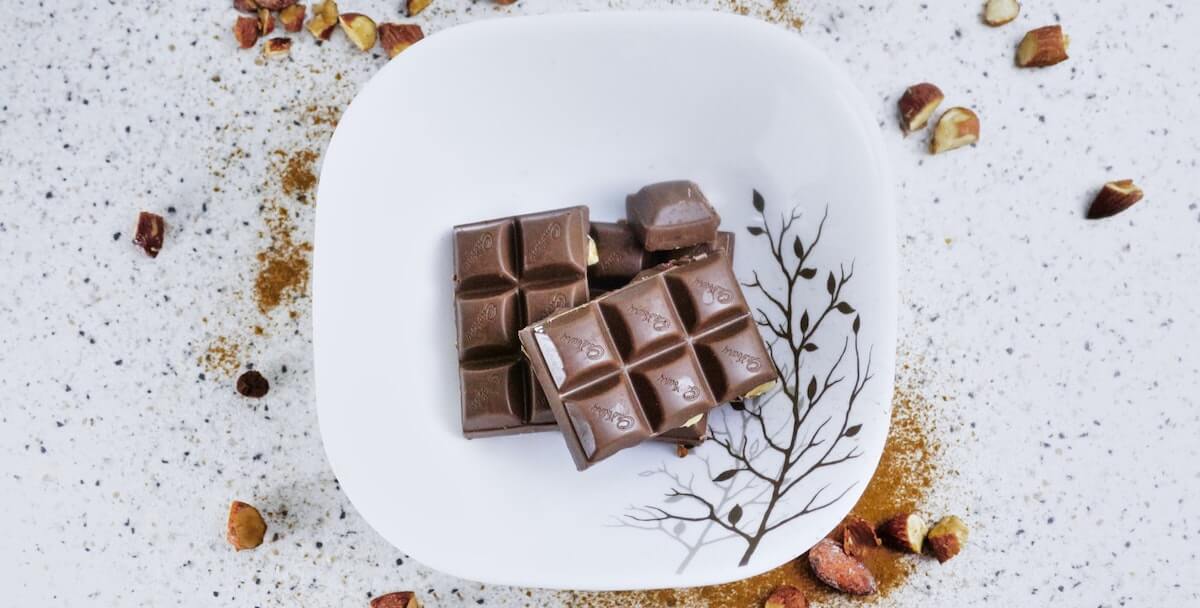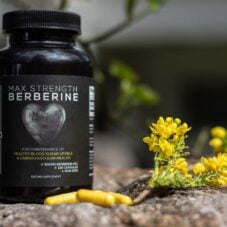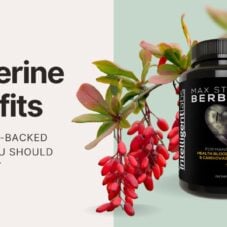Nutrition
Awesome News, Chocolate is Officially a Superfood!
Chocolate is officially a superfood!? Surely you are kidding me, please don’t do that it’s not very nice!?
I am not kidding you, although there is a slight catch. It’s that it’s actually the cocoa powder in chocolate that is full of amazing health-boosting minerals and molecules.
That means you need to go for dark chocolate with a minimum of 70% cocoa powder, which cuts out the majority of the sugar found in ordinary milk chocolate. It also cuts out the milk or dairy for people with dairy issues.
If you are used to milk chocolate, initially dark chocolate can taste a little funny, but the more you eat it, the more you like it. Personally, I now love the 70% and eat a little every day as a treat. You can also find strengths right up to 99% (which is certainly an acquired taste!), it’s really down to your personal preference.
Also, if you’re wondering if cocoa is the same as cacao? Read this article here!
So, here’s why chocolate is officially a superfood!
Here’s what 100 grams of dark chocolate gives you (1):
- 11 grams of prebiotic fiber, so it’s great for your gut.
- 67% of the RDI for Iron that is vital for transferring oxygen around the body and preventing anaemia.
- 58% of the RDI for Magnesium which helps us to relax and switch off.
- 98% of the RDI for Manganese an important co-factor for the body’s main antioxidant glutathione.
- 89% of the RDI for Copper (whilst most people know about Iron and how important it is to prevent anaemia, Copper is actually needed to transport Iron around the body, so it can be just as important to prevent anaemia).
- There’s also Selenium, Zinc, Phosphorus, Calcium, and Potassium.

Other amazing compounds found in dark chocolate
As well as the minerals mentioned above, dark chocolate also contains lots of:
- Bioflavonoids
- Pyrroloquinoline quinone (PQQ)
- Resveratrol
Let’s take a look at what these great compounds can do in more detail!
Bioflavonoids
Bioflavonoids are the molecules in fruit and vegetables that give them color. All fruits and vegetables contain some bioflavonoids, however, chocolate contains a lot. Bioflavonoids have been shown to improve heart health, reduce the risk of heart disease, reduce LDL (aka the ‘bad’ cholesterol) and improve HDL (aka the ‘good’ cholesterol), and even improve blood flow to the brain.
Resveratrol
Resveratrol is a powerful antioxidant that can protect your cells from free radical damage, is great for skin, and can even help stabilize blood sugar. It’s the compound found in grape skins and red wine.
Resveratrol first hit the headlines back in 2003 when it was found to significantly extend lifespan in Saccharomyces cerevisiae, a type of yeast. It activates genes called sirtuins that are able to fix the mutations in our DNA which happen naturally as we age (2).
Pyrroloquinoline quinone (PQQ)
PQQ is currently my favorite molecule! It’s only been recently discovered, but there is a lot of excitement about it. It acts as an antioxidant, but also as an enzyme cofactor, which means that it allows certain enzymes to work.
The main areas of interest for PQQ are in our mitochondria. Mitochondria are responsible for energy production and are incredibly important to our health. In fact, each one of our cells has thousands of mitochondria, and roughly half of the body’s dry weight, (i.e. our weight if you removed all the water) is made up of just mitochondria!

Dark chocolate, PQQ, and the mitochondria
We all know we need to breathe oxygen to live, and our mitochondria are the reason why, because they use this oxygen to produce energy. However, oxygen can also cause oxidative stress in our mitochondria. It’s this oxidative stress that we need antioxidants to counteract.
Mitochondrial antioxidants
Not all the antioxidants we hear about are able to work in our mitochondria, but PQQ is one that does, so it specifically protects our mitochondria from oxidative damage. It also stimulates mitochondrial biogenesis which means it makes the body produce more mitochondria (3).
The more mitochondria we have, the more the energy production can be spread out between them, and the less stress each individual mitochondrion is put under. This keeps each mitochondrion healthier. A decline in the health and energy production of our mitochondria is thought to be one of the main reasons why we age. Anything we can do to boost mitochondrion health can help us to live longer (4)!
Also, the Manganese and Selenium that dark chocolate contains are also specifically used in the mitochondria. The antioxidant enzymes SOD and Glutathione Peroxidase need them to work properly. This makes dark chocolate a powerhouse for your mitochondria and energy production in the body.
Sent from a galaxy far far away!
Perhaps even cooler than its effects on mitochondria is that PQQ has been found in ‘interstellar dust’ on asteroids in outer space. The dust, which was collected by spacecraft, suggests that maybe the first molecules of life on earth actually passed through space on comets and asteroids which then crashed into the earth many years ago (5).

Health benefits of eating dark chocolate
So enough of the theory for now, let’s look at some of the specific research on the health benefits of eating chocolate (hence it being called a superfood)!
Cholesterol
One randomized controlled trial on Japanese men with slightly high cholesterol levels found that eating just 13 grams of cocoa powder a day (which would be just 18.5grams of 70% dark chocolate) resulted in the following:
- Reduced their LDL (aka the bad cholesterol) both in total number and the amount that had been damaged through oxidation, and
- Increased their HDL (aka the good cholesterol).
It’s the oxidized LDL that is most likely to cause heart disease, so we want to stop LDL from becoming oxidized! The good news is a further 3 studies on chocolate have all shown specifically that it can prevent oxidation of LDL cholesterol (6,7,8).
Another study at Penn State University showed that dark chocolate reduced LDL to a greater extent when compared with a diet that was low in bioflavonoids (9).
Heart disease
This reduction in the oxidation of bad cholesterol has carried over into observational studies that looked at heart disease risk and chocolate consumption. One study over 15 years found that the heart disease risk was reduced by 50% for those that ate the most chocolate compared to those that ate the least (10).
Another study found that the more chocolate a person ate, the less plaque was found in their arteries (11). It’s the plaque in the arteries that can break off and cause heart attacks and strokes.

Brain function
Is chocolate good for the brain? Yep, that’s what these studies found. In the first, they tested healthy young people with some puzzles then gave them cocoa bioflavonoids for 5 days. Researchers found that they performed better at the puzzles after taking Cocoa Bioflavonoids (12).
The other study looked at a completely different group of people by testing elderly subjects with mild cognitive impairment. Cognitive impairment means the age-related decline in brain functions such as memory that so many of us experience as we get older. They found that the more Cocoa Bioflavonoids the subjects took, the better they did on a range of tests designed to test levels of memory, concentration, understanding of the environment, and communication ability (13).
Related article: Does Chocolate Make You Smarter?
Feeling good
Last, but by no means least, is chocolate’s effect on how we feel. A Finnish study of 305 pregnant women found that the mothers that ate chocolate daily had more relaxed babies at 6 months old (14).
Another study on elderly men with an average age of 76 found that those that ate chocolate had better psychological health than those that didn’t (15).
But then, did we really need a scientific study to tell us that chocolate can make us feel good! So, there you go, the next time you go to the supermarket, grab some dark chocolate – it’s officially a superfood.
References
(1) https://nutritiondata.self.com/facts/sweets/10638/2
(2) Konrad T Howitz, Kevin J Bitterman, Haim Y Cohen, Dudley W Lamming, Siva Lavu, Jason G Wood, Robert E Zipkin, Phuong Chung, Anne Kisielewski, Li-Li Zhang, Brandy Scherer, David A Sinclair, Small molecule activators of sirtuins extend Saccharomyces cerevisiae lifespan, Nature, 2003 Sep 11;425(6954):191-6.
(3) Kazuhiro Saihara, Ryosuke Kamikubo, Kazuto Ikemoto, Koji Uchida, Mitsugu Akagawa, Pyrroloquinoline Quinone, a Redox-Active o-Quinone, Stimulates Mitochondrial Biogenesis by Activating the SIRT1/PGC-1α Signaling Pathway, Biochemistry, 2017 Dec 19;56(50):6615-6625.
(4) Mitochondria and the Future of Medicine: The Key to Understanding Disease, Chronic Illness, Aging, and Life Itself, Dr Lee Know, Chelsea Green Publishing Co
(5) Franz R Krueger, Wolfgang Werther, Jochen Kissel, Erich R Schmid, Assignment of quinone derivatives as the main compound class composing ‘interstellar’ grains based on both polarity ions detected by the ‘Cometary and Interstellar Dust Analyser’ (CIDA) onboard the spacecraft STARDUST, Rapid Commun Mass Spectrom. 2004;18(1):103-11.
(6) D Rein, S Lotito, R R Holt, C L Keen, H H Schmitz, C G Fraga, Epicatechin in human plasma: in vivo determination and effect of chocolate consumption on plasma oxidation status, J Nutr 2000 Aug;130(8S Suppl):2109S-14S.
(7) Y Wan, J A Vinson, T D Etherton, J Proch, S A Lazarus, P M Kris-Etherton, Effects of cocoa powder and dark chocolate on LDL oxidative susceptibility and prostaglandin concentrations in humans, Am J Clin Nutr. 2001 Nov;74(5):596-602.
(8) Seigo Baba, Midori Natsume, Akiko Yasuda, Yuko Nakamura, Takaaki Tamura, Naomi Osakabe, Minoru Kanegae, Kazuo Kondo, Plasma LDL and HDL cholesterol and oxidized LDL concentrations are altered in normo- and hypercholesterolemic humans after intake of different levels of cocoa powder, J Nutr. 2007 Jun;137(6):1436-41.
(9) https://www.sciencedaily.com/releases/2001/10/011024073452.htm
(10) Brian Buijsse, Edith J M Feskens, Frans J Kok, Daan Kromhout, Cocoa intake, blood pressure, and cardiovascular mortality: the Zutphen Elderly Study, Arch Intern Med. 2006 Feb 27;166(4):411-7.
(11) Luc Djoussé, Paul N Hopkins, Donna K Arnett, James S Pankow, Ingrid Borecki, Kari E North, R Curtis Ellison, Chocolate consumption is inversely associated with calcified atherosclerotic plaque in the coronary arteries: the NHLBI Family Heart Study. Clin Nutr. 2011 Feb;30(1):38-43.
(12) S T Francis, K Head, P G Morris, A Macdonald, The effect of flavanol-rich cocoa on the fMRI response to a cognitive task in healthy young people, J Cardiovasc Pharmacol. 2006;47 Suppl 2:S215-20.
(13) Giovambattista Desideri 1, Catherine Kwik-Uribe, Davide Grassi, Stefano Necozione, Lorenzo Ghiadoni, Daniela Mastroiacovo, Angelo Raffaele, Livia Ferri, Raffaella Bocale, Maria Carmela Lechiara, Carmine Marini, Claudio Ferri
Benefits in cognitive function, blood pressure, and insulin resistance through cocoa flavanol consumption in elderly subjects with mild cognitive impairment: the Cocoa, Cognition, and Aging (CoCoA) study, Hypertension. 2012 Sep;60(3):794-801.
(14) Katri Räikkönen 1, Anu-Katriina Pesonen, Anna-Liisa Järvenpää, Timo E Strandberg. Sweet babies: chocolate consumption during pregnancy and infant temperament at six months. Early Hum Dev. 2004 Feb;76(2):139-45.
(15) T E Strandberg 1, A Y Strandberg, K Pitkälä, V V Salomaa, R S Tilvis, T A Miettinen, Chocolate, well-being and health among elderly men, Eur J Clin Nutr. 2008 Feb;62(2):247-53.




